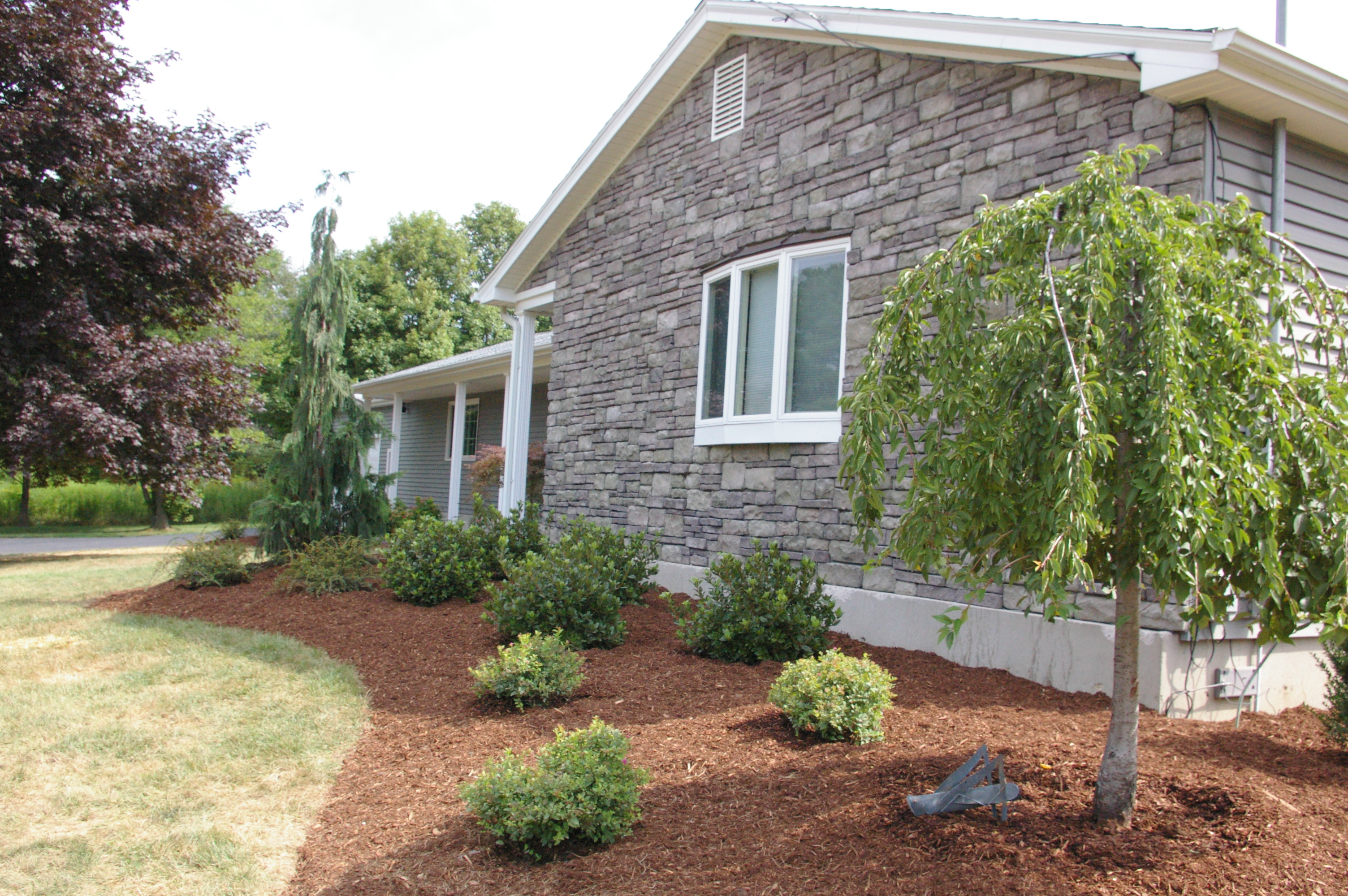Your landscape is a dynamic environment that is constantly growing and evolving. It needs maintenance as it matures, including pruning, mulching and weeding.
Just like changing the oil in your car or cleaning your chimney, there are tasks required to keep your landscape “Well tuned.”
How to Water New Plantings
The key to establishing plants is watering. Monitor and water new plants a minimum of two seasons after planting. For example, plants installed in the spring need watering through the spring and summer. Plants installed in the summer will need water through the summer and into fall.
New plants should need one to two inches of water per week. Irrigate with a watering can, bucket, hose, sprinkler, your irrigation system or the rain. You must keep the soil moist while your plants are establishing.
Water new plantings two to three times per week if there is insufficient rainfall. If using a hose or watering can water each plant multiple times to make sure the water soaks in. Water all the plants once and return when the water soaks in and water again. If using a sprinkler or irrigation system water long enough for the water to soak in to a minimum of four inches.
Confirm that your plants need water by brushing the mulch aside under a plant and feel the soil an inch down. If the soil feels dry, it’s time to water. When in doubt, water. New plants don’t have established root systems. It’s up to you to make sure there is ample water available.
Continue watering until spring or fall arrives and the weather stays rainy. If drought conditions develop, more than five to seven days without rain, you will need to irrigate. If your plants wilt or have yellowing leaves you need to water more.
What is Transplant Shock?
We took your plants from the utopian environment at the nursery and put them in the back of a windswept truck to your home. When they arrived we cut their roots to prevent girdling and they probably had a branch or two break in transport. Then, even with the best of intentions, we sometimes miss a watering.
Symptoms of transplant shock include yellowing and dropping of leaves, dieback, and lack of flowering for one to three years. In a season or two your plants won’t show any signs of their travels. The key is patience and diligence with watering.
Not all plants that start the race will make it to the finish line. There are some losses on every job, regardless of how carefully we ready the site and select your plants. If you notice a plant that looks like it’s not going to make the finish line please contact us so we can check and/or replace it as soon as possible.
Should I Fertilize?
We amended your soil at planting time. You don’t need to apply fertilizer. Additional fertilizer will cause excessive top growth and make your plants more susceptible to insects and disease. As the mulch breaks down it gives your plants the nutrients they need.
How Often Should I Mulch?
Re-apply mulch every year or two. Annual light mulching minimizes weeds, conserves soil moisture and keep your landscape looking fresh and new. Applying mulch less often may result in more weeds and less oohs and ahs by the neighbors.
Apply mulch to a total depth of two to three inches . Mulch over three inches starves roots of oxygen and encourages bark and root chewing rodents.
When re-mulching a light dusting with a shovel or pitchfork is all that’s needed. When re-mulching keep the mulch in the wheelbarrow and apply only enough to cover the existing mulch up to two inches in-depth.
Keep three to six inches of space between mulch and the trunks of trees and shrubs. Mulch touching bark encourages rodents and disease. Less is better when re-mulching. The mulch volcanoes erupting around commercial parking lots are a prime example of how not to mulch.
When buying mulch use a finely ground natural bark product. Purchase mulch made of bark as opposed to wood. Quality mulch will cost twice as much as the base offering at your supplier. It’s worth every penny. Two quality mulches locally available are Pure Double Ground Hemlock Bark and Cedar Bark Mulch.
Before re-mulching turn your mulch. Mulch that is not turned becomes an impenetrable mat that repels water and prevents oxygen from reaching your plants roots. Use a tool called a garden weasel, pitchfork or metal rake to fluff the mulch before re-applying.
Please watch the video below for detailed instructions on how to turn the mulch in your gardens.
Can You Help Maintain my Gardens?
If you would like assistance maintaining your gardens our Garden Maintenance Program is for you. This service entails one or more visits per year to tend to the essentials of garden care, including edging, mulching, weeding, pruning, dead-heading, and fall clean up.
Please watch the video below for more information about our garden maintenance program.
If there are any details on caring for your landscape that are not clear please contact us for more information.
An ounce of prevention is worth a pound of cure!
